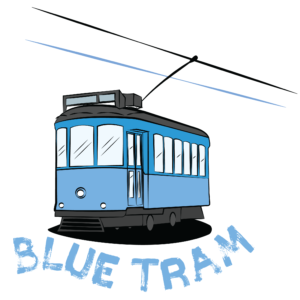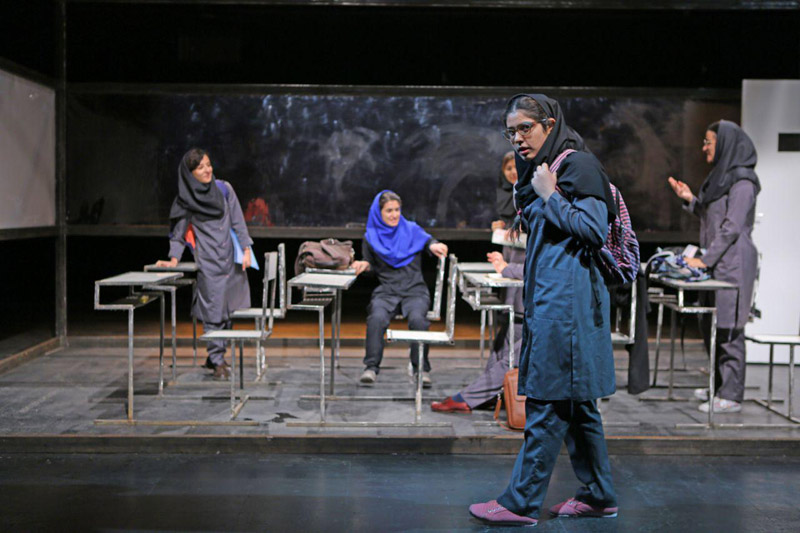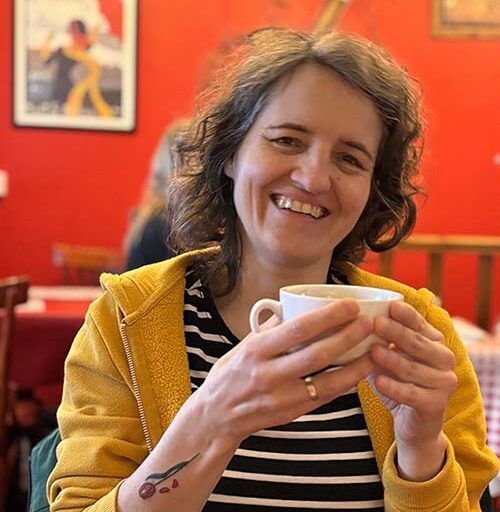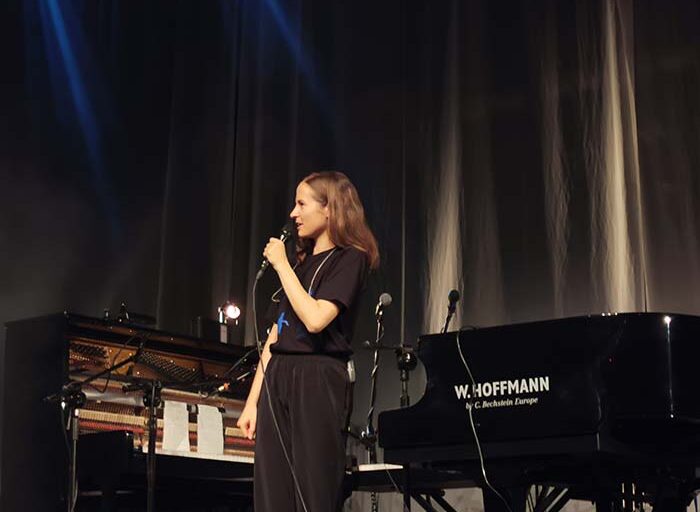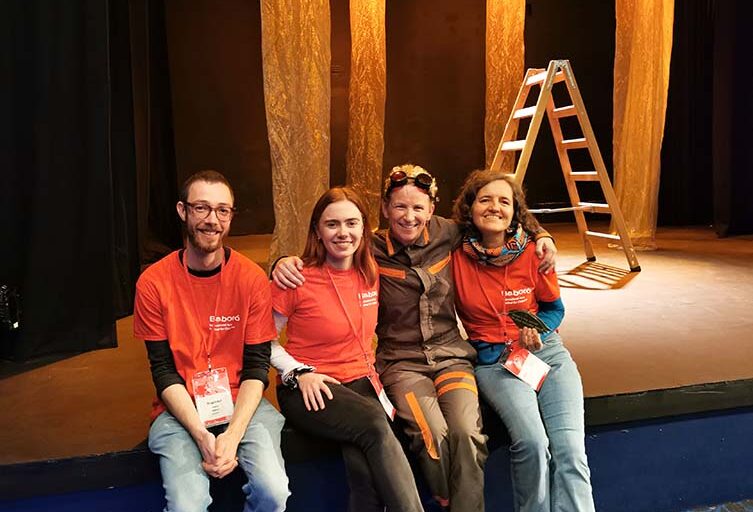This post is also available in:
 polski (Polish)
polski (Polish)
Your heart knows the way. Run in that direction.
Rumi
We scroll the reality like a Facebook wall, but the excess of stimuli kills our sensitivity to ordinary things. Sometimes, we smooth our faces in Photoshop because we do not like visible fears and naive dreams. Meanwhile, theatre reveals the truth about being who we really are and what we long for at the bottom of our hearts.
Recently, I could refresh it again thanks to “New Narratives” – an online showcase of contemporary Iranian theatre. The several-day meeting was organized by Nowrouzehonar – Spring of Art – the first Iranian international theatre agency co-founded by Sepehr Sharifzadeh.
Pieces of performances, photos, and individual conversations with artists were for me like doors to the world that I do not know, but at the same time, it uncovers some spaces inside me. Because contemporary Iranian theatre does not afraid to ask uncomfortable questions and the current problems of the individual and society put in the light. It dares to experiment and concomitantly reaches back to ancient roots.
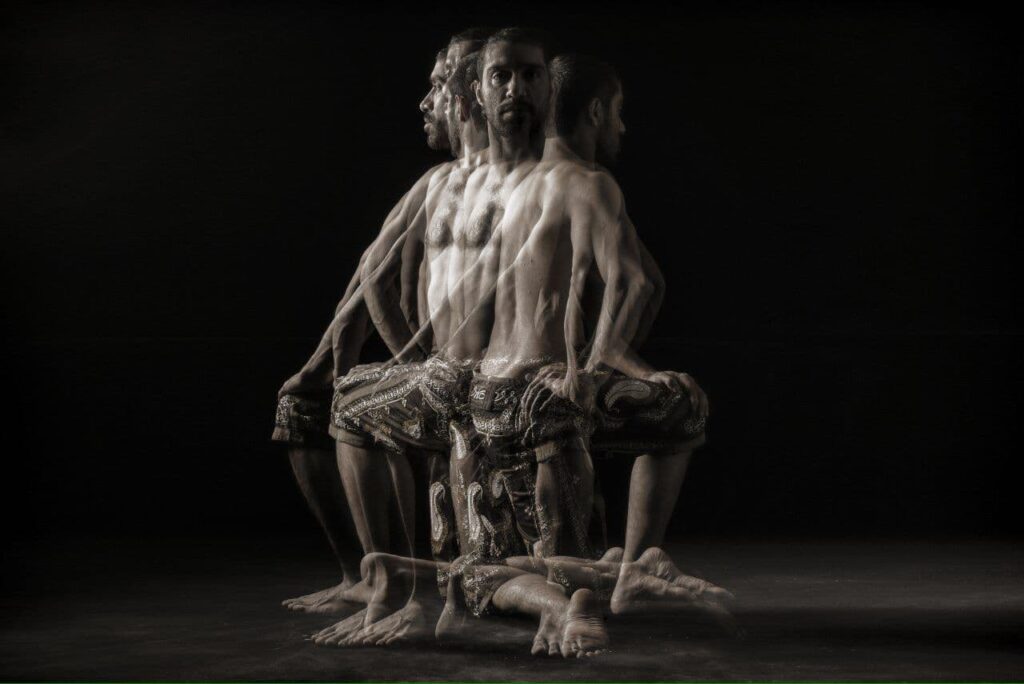
Zoorkhaneh performance, dancer Mostafa Shabkhan.We carry the places where we have been
If we wish, public space can become our private theatre and trigger memories – proves the director Keyvan Sarresteh in his project “Stage Director”. I really liked the idea that the familiar elements of the places we currently live like: windows, doors, stairs – can transfer us through memories and feelings to the apartment, city, country, where we used to live.
We are growing older while we never pass our childhood
Contemporary Iranian theatre often touches upon the subject of identity and the struggle associated with it. In the play “Wondering songs on the wind”, three women with the same name Aida, are forced to become refugees. They go out into the world from three different countries: Iran, Syria, and Egypt. This poetic story is like a modern Odyssey by Homer, the heroines, just like each of us, learn the truth about themselves in their journey through life.
Vani – a character from the “Bath” puppet theatre, escapes from the pressure of television and the media to a private bathroom. There, he struggles along with his loneliness, emotions, and existence. The story is presented very vividly with cartoon parts.
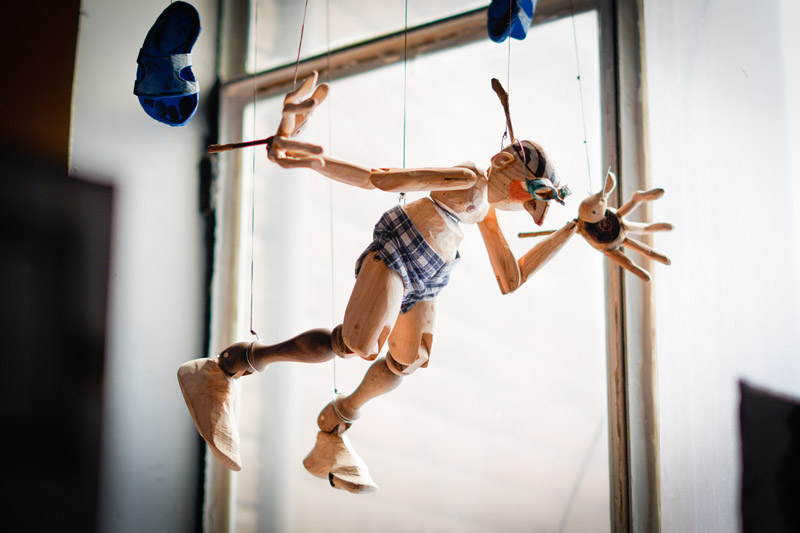
Bath, puppet theatre.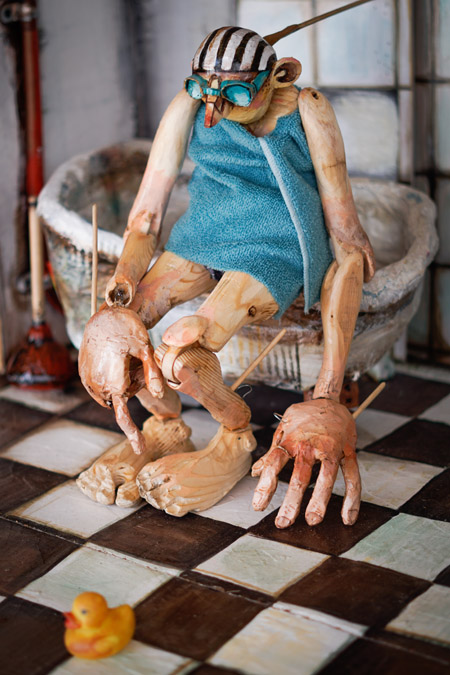
Bath, puppet theatre.Azadeh Kangarani, in the play “A Strung Up at the Aiport”, describes her own experiences of feeling different and struggle of identity at the airports around the world. Another director Parham Rostam Abadi wonders how often we absorb the roles given to us on a tray and only in old age it turns out that we are different than we thought our whole life. In his performance “1″ he refers to the biblical story of Abraham and Isaac and tries to capture the struggles of a boy and then a man in a patriarchal heteronormative society.
In the Zoorkhaneh performance, Mostafa Shabkhan – award Iranian choreographer and dancer describes the place for dance by twin, and later he wrestles by dancing in the bordered circle, on the floor. He puts out the feelings through his body. The artist wears a TONOKE, traditional cloth of zoorkhaneh – Persian heroic sport, and a form of martial arts.

The dancer Mostafa Shabkhan.What is the human heart?
Iranian artists wonder about it. Like Shima Khazaei in her play “April Odyssey”. Does the heart make us different from animals? Its heroine picks hundreds of carrots on stage and lives in her inner world. If her heart still feels?

A screen-shot from "April Odyssey".The system, society, education
The Iranian theatre very often raises the issue of restricting women and the system, applicable law, or education. Some plays cannot be exhibited in Iran precisely because of restrictions, such as the requirement for women to cover their heads.
In the play AST (Is) by Parnia Shams, a school class is a symbol of the society under the look of a watchtower, an atmosphere that suppresses creativity, connection and intrudes the basic private choices of individuals. It is interesting that although the presence of the grownups, teachers, directors, and counselors is felt, they are not visible to the audience. Are we always aware of imposed standards?
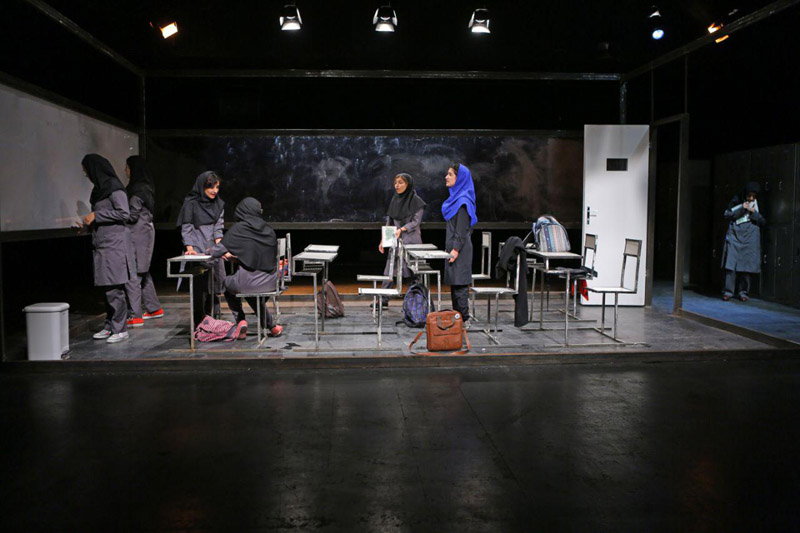
AST (Is) performance.In another performance directed by Amin Asem, an individual comes to a modern city – it is not known whether he or she, the authors of the show, define it as a “case”. Kaspar has to learn about his or her body and being in society from the beginning. The creators of the play want the audience to feel the pain of someone trying to understand a strange space and completely new roles. Kaspar Project lets us think about the system, low, and training process.
However, the kaleidoscope of Iranian contemporary theatre is saying: I wanna change the world. Do you like to change something, too?
Through this blog post, I would like to invite you to a series of meetings with Iranian artists. In the following articles, I will present the interviews with several creators. It will be a great chance to explore more about contemporary Iranian theatre. Stay tuned!
All photos from the NH Theatre Agency. All right are reserved.
If you want to find out more about my meetings with theatre, check out: Theatre as a mirror, I don’t want to be the same anymore.
